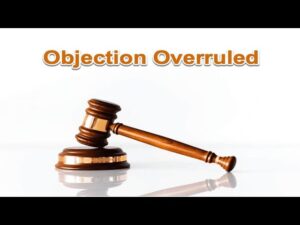How to Impeach a Supreme Court Justice: Exploring the Process and Possibilities
how can a supreme court justice be removed
In recent times, groundbreaking revelations from trusted sources like ProPublica, the Washington Post, the New York Times, and Politico have cast a shadow of scandal over the reputation of Supreme Court Justice Clarence Thomas. This has ignited a crucial question: What would it entail to impeach a justice of the Supreme Court, a high-stakes endeavor that requires a rigorous legal process and a substantial majority consensus?
who can impeach supreme court justices
Impeachment of a Supreme Court Justice is an extremely rare event in American history. The founding fathers designed lifetime appointments for federal judges to insulate them from political pressures. However, the constitution does provide a mechanism for their removal in cases of egregious ethical or criminal violations. Successfully impeaching and convicting a Supreme Court Justice requires building widespread public and Congressional support for their ouster.
Background on Impeachment
The United States constitution lays out a clear process for impeachment and removal of federal officials, including judges, in Article I, sections 2 and 3. The House of Representatives has the “sole Power of Impeachment.” This involves approving articles of impeachment for “Treason, Bribery, or other high Crimes and Misdemeanors.” The Senate then has the “sole Power to try all Impeachments.” Conviction requires a vote by two-thirds of Senators present.
The Lifetime Appointment Challenge
One of the distinctive aspects of Supreme Court justices is their lifetime appointments, which continue until they decide to retire or pass away. The process of impeaching a Supreme Court justice bears similarities to the impeachment of a president or other civil officers. It commences with a vote in the House of Representatives, where a majority vote is required to initiate the impeachment process. If the motion succeeds, a trial takes place in the Senate. Here, a two-thirds majority is necessary for a conviction.
The Constitutional Grounds for Impeachment
For an impeachment to be substantiated, it must be based on justifiable grounds. The constitution’s Article II, Section 4 outlines “Treason, Bribery, or other high Crimes and Misdemeanors” as legitimate grounds for impeachment, albeit without a precise definition of the latter. In other cases, officers are expected to hold their positions during “good Behaviour.”
A Closer Look at Clarence Thomas’s Ethical Lapses
Clarence Thomas, who has faced ethical controversies, offers an illustration of potential grounds for impeachment:
- Alleged Sexual Harassment: Thomas’s confirmation hearing in 1989 featured Anita Hill’s testimony, accusing him of sexually harassing her during their time at the Equal Employment Opportunity Commission. Although the hearings damaged his reputation, he secured confirmation by a slim Senate majority of 52-48 and became an associate justice on the Supreme Court.
- Undisclosed Luxury Gifts and Financial Favors: A report from ProPublica exposed Thomas’s acceptance of substantial luxury gifts and financial favors from a prominent conservative donor, Harlan Crow. This raised concerns about conflicts of interest, as the gifts went undisclosed, including Crow’s purchases of properties from Thomas and payment of his grandnephew’s tuition.
- Potential Conflict of Interest: Thomas’s wife, Ginni Thomas, engaging in political activism, presents another ethical concern. Despite his wife’s involvement in overturning the 2020 US presidential election results, Thomas refused to recuse himself from related cases, leading to questions about impartiality.
- Clandestine Payments: A report by the Washington Post revealed Ginni Thomas’s receipt of secretive payments via a nonprofit organization, the Judicial Education Project. This raises concerns about financial improprieties and undisclosed dealings.
Grounds for Impeachment
The phrase “high Crimes and Misdemeanors” offers only vague guidance on substantive grounds for impeachment. There is no formal definition. Historically, it has covered serious abuses of power, corruption, manipulation of office for personal gain, and violations of public trust or oath of office. For judges, it often involves favoritism, conflicts of interest, intoxication on the bench, or abuse of contempt powers. Egregious personal conduct like sexual assault could also qualify.
Examples of Impeachable Offenses
- Bribery
- Perjury
- Intoxication on duty
- Unconstitutional rulings
- Sexual assault or harassment
- Conflicts of interest
- Failure to disclose income sources
The Impeachment Process
While the Constitutional provisions are straightforward, practically executing an impeachment and removal is complex, difficult, and rare.
House Initiates Impeachment
The impeachment process starts in the House of Representatives. Any member can introduce a resolution seeking impeachment. These charges would then get assigned to the House Judiciary Committee.
Judiciary Committee Investigation
The Judiciary Committee holds hearings, conducts an investigation, and determines if articles of impeachment are warranted. If approved, the committee drafts the articles detailing specific charges and sends them to the full House for a vote.
House Votes on Articles of Impeachment
A simple majority vote is required to impeach. If the articles pass, the House appoints “managers” to prosecute the case in a Senate trial presided over by the Chief Justice of the Supreme Court.
Senate Conducts an Impeachment Trial
The Senate impeachment trial loosely resembles a criminal case. House managers present evidence, including witness testimony under oath, to substantiate the charges in the articles of impeachment.
Role of House Managers
The House managers have the burden of establishing adequate proof of “high crimes and misdemeanors.” They play a prosecutorial role, laying out arguments, evidence, and precedents to convince Senators the charges warrant conviction and removal from office.
Role of Chief Justice
The Chief Justice of the Supreme Court presides over the Senate trial. They can resolve procedural questions and issue orders to help facilitate an orderly, substantive consideration. But their powers are otherwise limited compared to a normal judge.
Conviction Requires a 2/3 Senate Vote
After hearing arguments from House managers and the defense, the Senate conducts a final vote on each article of impeachment. Conviction and removal requires a two-thirds supermajority, typically a very high hurdle to clear.
History of Judicial Impeachments
While not unheard of, only 15 federal judges have ever faced impeachment. The rarity highlights the significant barriers involved. Most judges caught up in scandals ended up resigning before facing conviction.
Few Judges Have Been Impeached
Over 230 years of U.S. history, only 15 federal judges have been impeached by the House and faced a Senate trial. That’s an average of less than one impeachment per decade. The small sample size hints at the difficulty of mustering political will for such an extreme remedy.
Most Resigned Before Conviction
For those who have been impeached, the Senate vote often serves more as a “writing on the wall.” Only eight judges have been convicted and removed from office. The rest resigned under fire once it became clear the tide had turned irrevocably against them. Rather than face certain ouster, they chose to leave office voluntarily.
Two Attempts to Impeach SCOTUS Justices
The rarest of birds is any attempt to impeach and remove a Supreme Court Justice. It has only happened twice at the federal level:
In 1804, the House impeached Samuel Chase, an anti-Jeffersonian Federalist nicknamed “Old Bacon Face.” The Senate acquitted Chase after a trial, seen by some as helping establish broader independence of the judicial branch.
In 1969, Representative Gerald Ford raised the possibility of impeaching liberal Justice William Douglas. The House took no action given lack of credible grounds and Douglas served until his retirement.
Public and Political Support Needed
The few past cases highlight that successfully impeaching any federal judge requires substantial public outrage coupled with strong Congressional support.
Building a Consensus for Impeachment
Removing a Supreme Court Justice, with lifetime tenure by design, poses an even higher bar to clear politically. It likely requires:
- Clear evidence of criminal acts or ethical lapses
- Strong disagreement with rulings or judicial philosophy
- Bipartisan consensus for impeachment
Overcoming Hurdles
As with presidential impeachments, several factors pose hindrances, including:
- Maintaining momentum and focus
- Securing cooperation of Congressional leaders
- Garnering support across partisan lines
- Presenting easily digestible charges
- A convincing need for removal rather than resignation
Conclusion
While the Constitution does allow for impeaching a Supreme Court Justice, invocation of this provision faces immense legal and political constraints. The rarity of any federal judge facing removal speaks to the level of consensus required to seriously pursue it. Circumstances dramatically out of institutional norms typically underpin any judicial ouster.
Absent broad bipartisan agreement on clear criminality, conflicts of interest, or abuse of office, impeachment remains more theoretical than practical in reality. But with lifetime tenure, it stands as the ultimate path to remedy otherwise unaccountable failings.
FAQs
How many votes are needed to impeach a Supreme Court Justice?
A simple majority vote, 50% plus one Representative, is required in the House to approve articles of impeachment and impeach a Supreme Court Justice. However, a two-thirds vote of Senators present is required to actually convict and remove the Justice at trial.
What happens if a Supreme Court Justice refuses to resign after being impeached?
If a Supreme Court Justice declines to resign after impeachment, the Senate would still conduct a trial presided over by the Chief Justice. The Justice can defend themselves against the charges in the House’s articles of impeachment. If convicted by two-thirds of the Senate, however, they would be removed regardless of wanting to remain.
Can Supreme Court Justices be removed without impeachment?
No, Supreme Court Justices have lifetime tenure specifically to isolate them from political pressures. The only constitutional way to involuntarily remove them is through Congressional impeachment for “high crimes and misdemeanors” followed by Senate conviction. There is no other process to force them off the bench.
Has any Supreme Court Justice been impeached before?
No Supreme Court Justice has ever been successfully impeached and removed from office. Only two have faced any impeachment proceedings: Samuel Chase in 1804 and William Douglas in 1969. Both ultimately remained on the bench without Senate conviction. Chase’s acquittal helped establish broader judicial independence.
What’s the difference between resigning and being impeached?
The only way to forcibly remove a Supreme Court Justice is through formal Congressional impeachment with subsequent conviction by the Senate. Resignation is voluntary. While political pressure or scandal may induce a Justice to step down, resignation allows them to leave on their own terms rather than face removal through impeachment.







